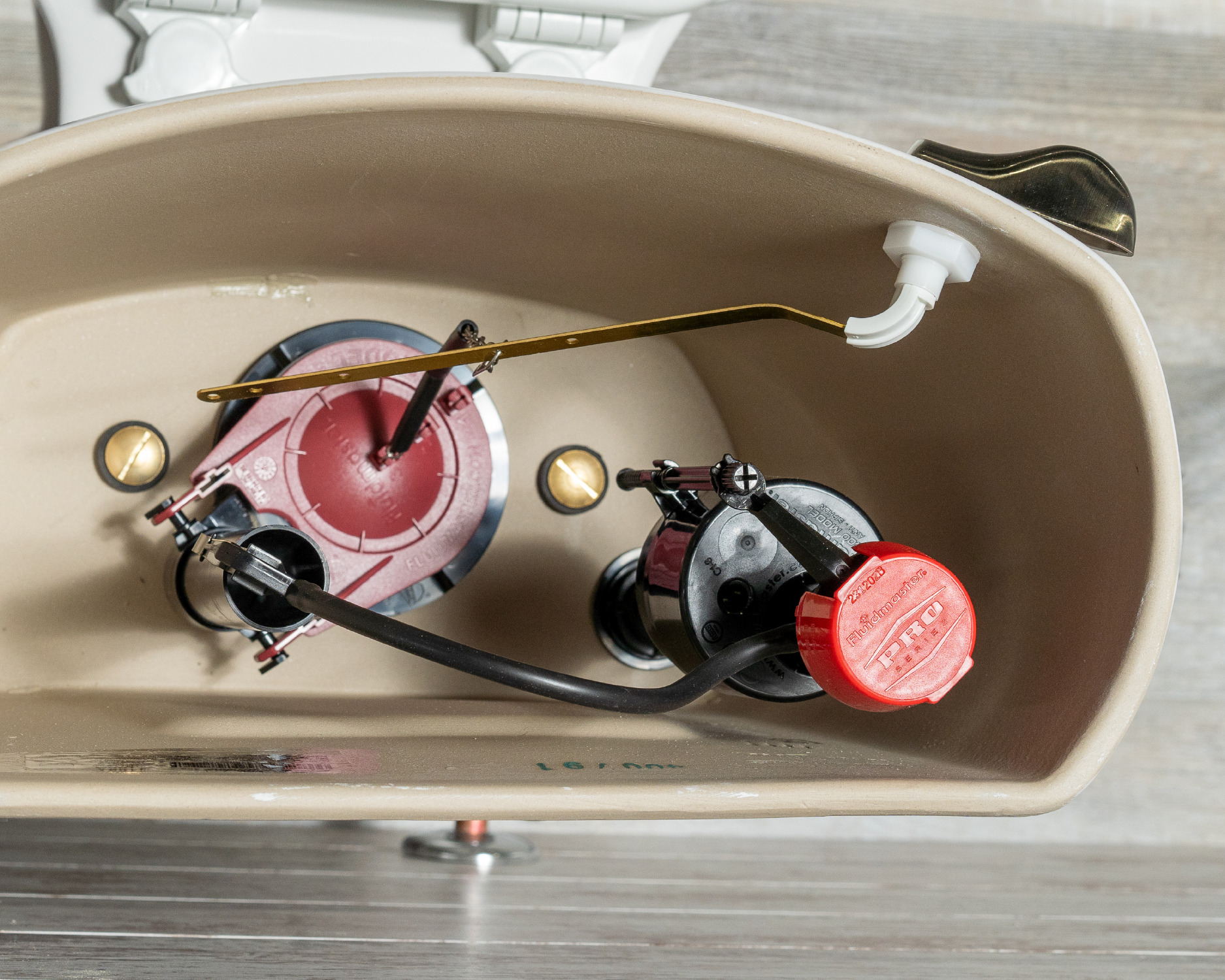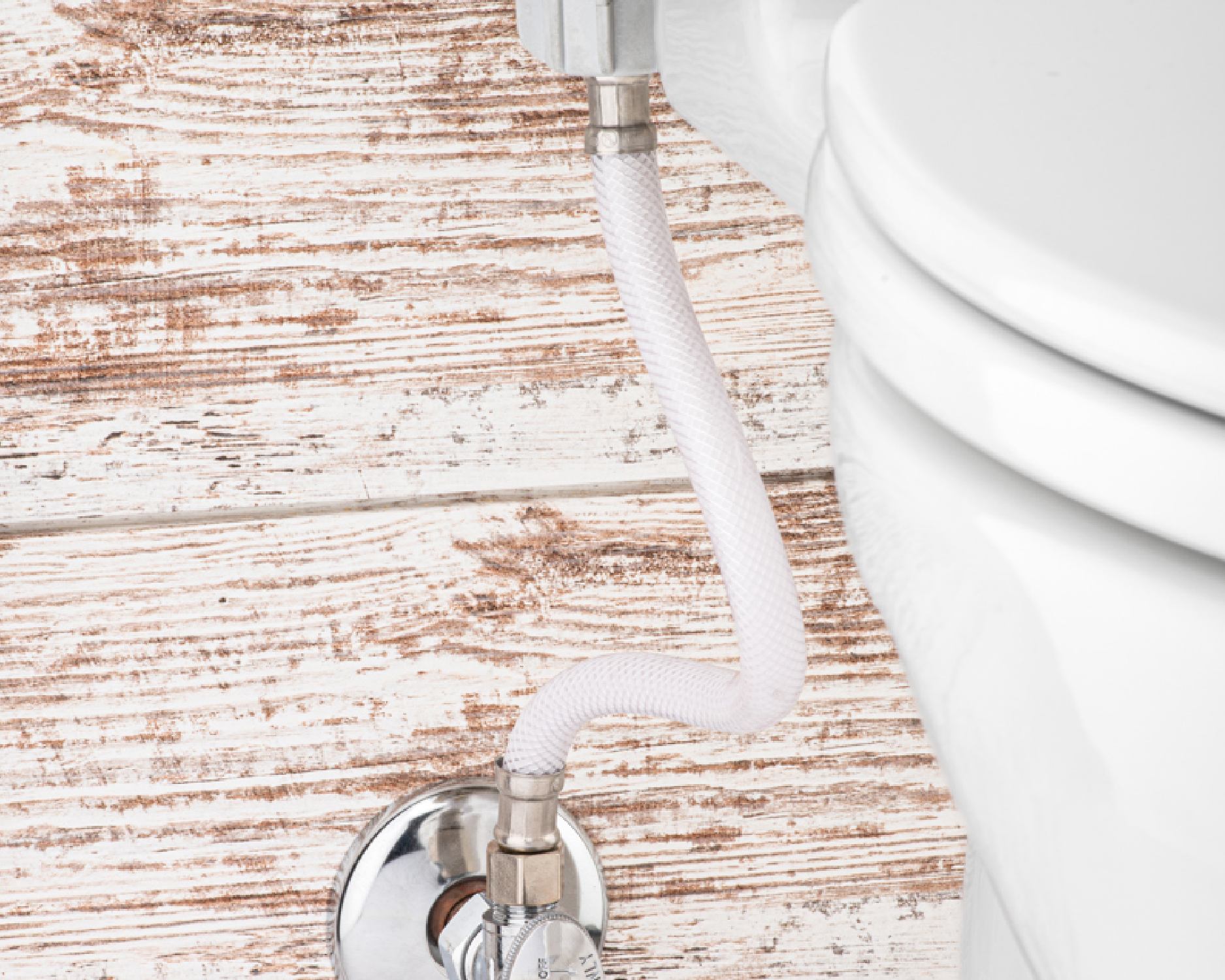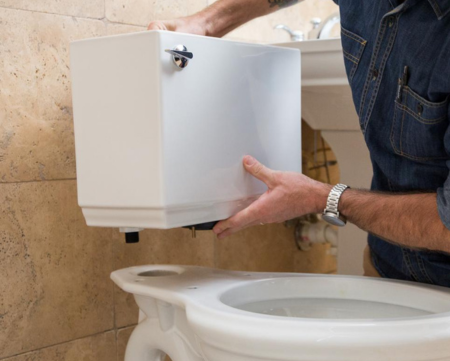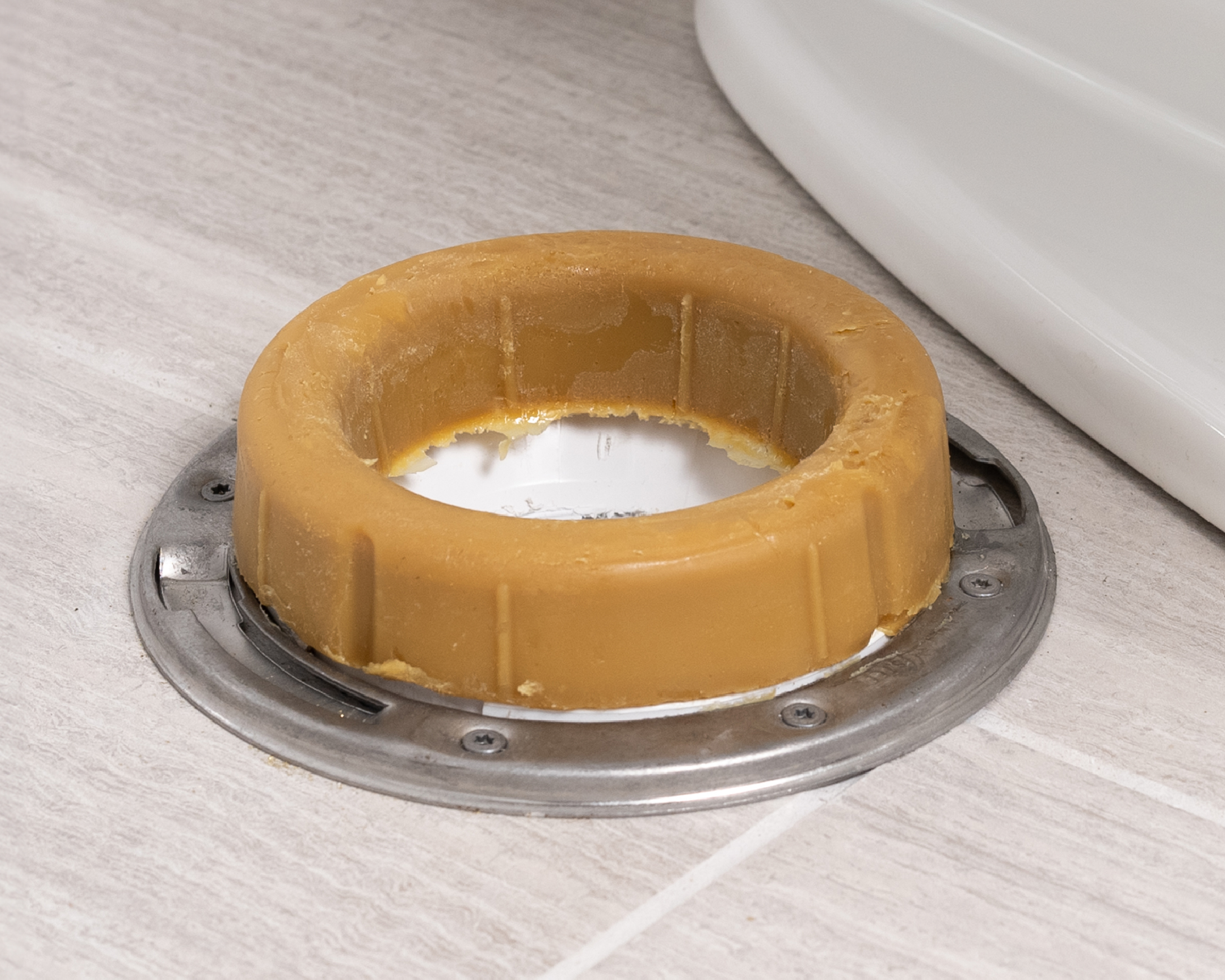Discover the reasons behind your toilet’s leakage and learn how to fix the issue with our expert troubleshooting guide. By following these straightforward steps, you can save both time and money while avoiding potential flooding. Toilet repairs don't have to be complex or costly.
Identify the most frequent causes of a leaking toilet and discover the optimal solutions for each scenario. Remember to consult your local plumber for an accurate diagnosis and solutions.
1. Deformed or Blocked Flapper
A flapper's primary function is to drain water from the tank to the bowl when a toilet is flushed. The flapper is a valve inside the toilet tank, usually made of rubber or plastic, connected to the flush valve and toilet lever (the handle you push down to flush).
When the toilet lever is resting, the flapper is held against the flush valve opening by the water in the tank, effectively sealing any water from entering the bowl. When you flush the toilet and push down on the lever, the flapper, typically connected to the lever by a chain, is lifted. As the lift occurs, the flapper, filled with air, begins to float, allowing water from the tank to drain into the bowl.
Once all the water has drained from the tank, the flapper can no longer remain afloat. It descends and once again seals the flush valve opening, preventing a continuous flow of water into the bowl. At this point, the fill valve refills the tank with water, and the process is ready to repeat.
Despite its small size, the flapper’s condition is critical. When it becomes cracked, warped, worn out, or blocked by debris, such as mineral deposits from hard water, it can silently inflate your water bill without your awareness.
Faulty flappers cause "silent leaks," through which water seeps continuously from the tank into the toilet bowl, resulting in a faint trickling or dripping sound after flushing.
Oatey Tip: Drop food coloring into the tank to check if the flapper is causing the leak. If you notice the food coloring in the bowl, you can confidently identify the flapper as the source of the toilet leak.

How to Fix a Damaged Toilet Flapper
Difficulty level: Easy; most homeowners can complete this fix independently.
To replace a flapper:
- Turn off the toilet valve.
- Empty the tank by holding down the lever.
- Remove the chain from the old flapper.
- Take out the old flapper from the flush valve.
- Install a new flapper of the same type and size.
To remove a blockage:
Clean the bottom of the flapper and the seal on the flush valve. If the flapper is over two years old, we recommend replacing it. Mineral deposits are challenging to remove. Over time, the flapper hardens and loses its ability to seal properly.
2. Compromised Fill Valve Connection
The fill valve in the toilet tank is responsible for refilling the tank’s water level to the correct height after flushing. It consists of a float that triggers the fill valve's opening, allowing water to flow into the tank. As the water level rises, the float also rises, causing the valve to close and prevent excess water from entering.
This fill valve is connected to the tank using a nut, typically positioned underneath the tank, and is sealed with a rubber gasket inside the tank. Over time, the gasket may develop cracks or deform, leading to a leak on the floor beneath the tank.
Although rare, the connection point where the fill valve is secured to the tank can leak if the nut is not properly tightened or if the gasket is installed incorrectly. If you notice water pooling on the floor around the toilet's base, this could be the cause.
How to Fix a Compromised Fill Valve Connection
Difficulty level: Moderate; some homeowners can handle these repairs on their own.
- Begin by visually inspecting the gasket for any signs of cracking or deformation. If you notice damage, it is necessary to replace the gasket.
- Examine the nut that fastens the fill valve to the tank. If it appears loose, carefully hand-tighten it to ensure a secure connection.
3. Cracked Water Supply Line
Water supply lines are an integral part of a toilet’s anatomy that homeowners often overlook. They connect a toilet fixture to a cold water supply, enabling a toilet to flush and replenish. Toilet supply lines can spring a leak, often severe, for many different reasons, especially when individuals fail to inspect and maintain them properly.
Over time, the constant opening and closing of the toilet's fill valve can cause rigid supply lines to weaken due to vibrations. Additionally, hard water can make supply lines brittle, leading to cracks in the nut that connects the hardware pieces.
Any impact or bump to the supply lines can also disrupt their connection seal. A broken supply line is usually easy to identify, resulting in puddling at the toilet's base. A faulty supply line can cause complete toilet failure or flooding from a burst.

How to Fix a Problematic Water Supply Line
Difficulty level: Moderate; some homeowners can handle these repairs on their own.
To replace a supply line:
It is generally recommended that supply lines be replaced every three to five years to prevent unexpected bursts or flooding. Additionally, a new supply line should be installed whenever you remove and replace the toilet.
- Begin by turning off the toilet valve.
- Empty the tank by holding down the tank lever until it is empty.
- Remove the supply line from the fill valve.
- Use an adjustable wrench to remove the supply line from the toilet shut-off valve.
- Attach the new supply line using an adjustable wrench.
- Hand-tighten the new supply line to the fill valve.
- Slowly turn on the valve and allow the toilet tank to fill with water.
- Visually inspect for any leaks.
4. Broken Tank-to-Bowl Gasket
The tank-to-bowl gas gasket is a simple device made of soft rubber. As its name suggests, it provides a watertight seal between the tank and bowl. A broken gasket will leak at the base of your toilet tank.
How to Fix a Broken Tank-to-Bowl Gasket
Difficulty level: Moderate; some homeowners can complete this repair on their own.
To replace a tank-to-bowl gasket:
- Turn off the water supply to the toilet.
- Drain the tank using a sponge or any other method to remove all the water.
- Disconnect the supply line from the tank.
- Remove the tank by loosening and removing the bolts that go through the tank inside and the bowl on the bottom.
- Take out the old gasket from the tank outlet.
- Put the new gasket over the tank outlet. It will snap in place easily.
- Put the tank back on top of the bowl and tighten the bolts. Rotate them as you do it and tighten them enough to keep the tank from shaking — but not so much that you crack the bowl.
- If the rubber on the tank-to-bowl bolts is rotten or cracking, it's also a great time to replace it. Additionally, the bolts themselves should be replaced since they will most likely be corroded as well.
- Reconnect the supply line to the tank.
- Turn on the water supply and let the tank fill up. Flush the toilet a few times to ensure that everything is working well.
- Use a flashlight to inspect the gasket area and check for water leaks.
- Tighten the bolts if necessary.

5. Damaged Closet Flange or Toilet Wax Ring
A closet flange, also called a toilet flange, serves as the point of connection between the toilet and a home’s sewage drainage system and secures the toilet to the floor. A wax ring mounted on the closet flange creates a watertight seal between the bottom of the toilet and the sewer pipe, preventing leaks, odors, or sewer gasses from escaping the fixture.
Closet flanges and wax rings work together. If the closet flange cracks and causes the toilet to become unstable, the rocking movement can also break the wax ring. When this occurs, water will leak from the toilet base and often through the ceiling below.
Improper installation practices are typically the reason for this type of failure. Many people tend to rock a toilet back and forth during installation. What happens to the wax gasket because of this? Because wax material has no memory, it won't be compressed evenly if this rocking movement occurs. A lack of even wax compression will likely result in several leak paths.
This is why our experts recommend slightly twisting side-to-side when placing a new toilet on the wax seal.

How to Fix a Damaged Closet Flange or Toilet Wax Ring
Difficulty level: Expert, a professional plumber is highly recommended.
Have you exhausted our list and still need help fixing your toilet? Call your local plumber for expert advice and guidance.